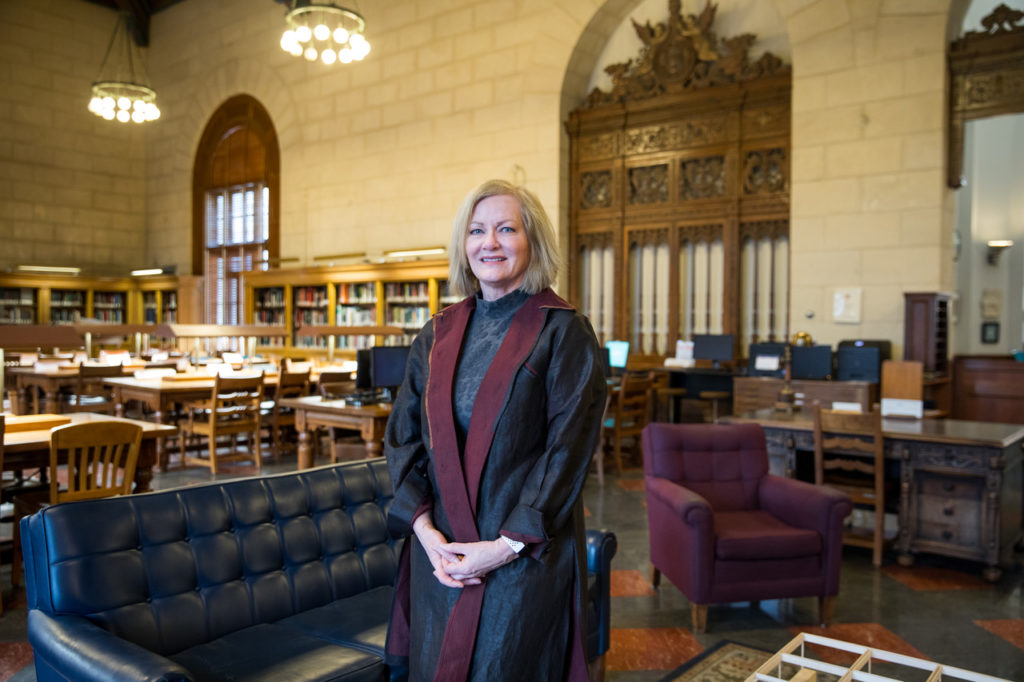As the first full-time female dean, Michelle Addington is committed to inclusivity and innovation.
By Poonam Patel, Photo by Kara Henderson

With a background in music, Michelle Addington had an unconventional path to the University of Texas School of Architecture, but as the school’s first full-time female dean, her past perfectly prepared her for this role.
“I realized I had terrible performance anxiety,” Addington says of her short-lived music major, “which is strange now because I speak in front of thousands of people all the time. I [then]switched to my second love, which was math, and eventually went into engineering.”
Before joining the faculty at UT in 2017, Addington served as the Gerald Hines Chair in Sustainable Architectural Design at Yale University’s School of Architecture. She also worked for NASA and DuPont and taught at Yale, Harvard University, the Technical University of Munich, Temple University and Philadelphia University.
“I’ve never been the kind of person that has a goal,” she says. “It’s always…been what intellectually excites me. What is the kind of thing that would make me wake up every day and be excited to learn about?”
Not only did UT’s offer spark Addington’s intellect, but moving to Austin also felt like coming home.
“My mother was born and raised in Austin,” she says. “I grew up in a household where she just talked about Austin all the time. … Austin always resided in my mother’s memories as this sort of magical place where she grew up. And I think that’s just always kind of hit a note with me.”
Coming up on almost two years since stepping into the position, Addington has found her own magic in Austin and at UT.
“The thing that impresses me the most is that there is an authenticity to Austin that embraces all who participate,” she says. “I don’t feel like an outsider.”
She’s striving to bring this same authenticity to her role as dean. Named one of Connecticut’s Women of Innovation, Addington was attracted to UT’s culture of innovation. Unlike Harvard and Yale, two universities known for their architecture schools and, according to Addington, that have “very uneasy relationships with their locale,” she believes UT is in a unique position to address rapid urban development.
As the 11th largest city in the nation with a population expected to reach 1 million in 2020, Austin is prime for community engagement and advocacy involving economic, demographic and geographic development.
“You expect a building to have life for a minimum of 50 years. I’m not talking about cheap residential projects. I’m talking about civic buildings, institutional buildings and commercial buildings,” she says. “Yet we have seen the city skyline change every six months. We see stresses and pressure on the city that are happening evermore rapidly. I think we are going to be one of the first schools of architecture in the country to be addressing this.”
UT’s commitment to sustainability and climate change was a defining factor in Addington accepting her position, as she has focused on both issues throughout her career.
Forbes included Austin in its 2018 list of the top 10 fastest-growing cities in the nation. Austin’s continuous growth offers UT students and faculty the opportunity to help resolve Austin’s environmental issues. In 2018, two faculty members from the School of Architecture, along with a UT law professor, complied a report highlighting policies and programs to help low-income communities and minimize gentrifying displacement through disincentivizing redevelopment and prioritizing current residents.
As Addington looks to the future of UT’s relationship with the city and architecture as an industry, she’s also committed to bringing up “those who have been left behind,” hoping her role can inspire other women in the industry and the next generation of female architects.


